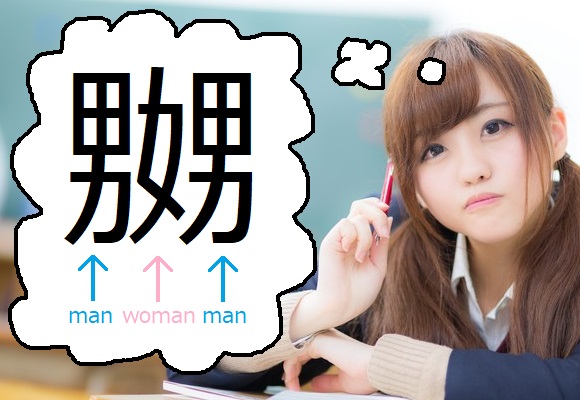
Apparently this kanji is read differently based on what country you’re from.
Japanese kanji can sometimes be read different ways depending on how they’re used, a quirk of the language that we saw before when one kanji was read five different ways in a single sentence.
Because of all these different readings, learning the language as a foreigner can be difficult. Sometimes you might not be able to read a kanji, but if you can figure out the context around it, you can guess at its reading.
▼ For example, pretend we had this kanji in English.
Its reading is “donut.”
▼ And it could be used in sentences like this.
But imagine if someone learning English saw that sentence. If they don’t know the kanji’s reading, they might guess it as “bagel” or “cookie” or “danish” or even “cupcake” (if you imagine it as looking at a cupcake from above).
And the same thing can happen in Japanese, sometimes with humorous results. Japanese Twitter user @ask82320757 shared a story about a foreigner misreading a kanji in an unexpected way.
▼ “I heard a story about a French person reading
the kanji 嬲る as mamoru (‘to protect’) and I cried.”
フランス人の日本語学んでる人が「嬲る」で「まもる」って読んだって話を聞いて涙出た…。
— ask (@ask82320757) October 18, 2017
In case you’re not familiar with the kanji in question, which is perfectly fair since it’s a pretty rare one, let’s break it down.
▼ The kanji is read naburu and means “to tease/torment.”
It’s made up of three smaller kanji: two “men” and one “woman.”
So the kanji that basically has one woman surrounded by two men means “to tease/torment.” That’s unfortunate, but the ancient scribes came up with all sorts of weird kanji, so we can’t really hold it against them.
What makes this funny is that the French learner of Japanese read the kanji as mamoru, meaning “to protect.” What probably happened was, he looked at the kanji, saw two men with one woman, assumed it meant “to protect,” and read it as such.
For Japanese people, it’s such a pure-hearted mistake that they couldn’t help but fall in love with the story.
“What a wonderful person, to read the kanji like that.”
“The men kanji will protect the woman kanji!”
“So chivalrous.”
“I wonder what his face looked like when he found out the real reading.”
“Can we appeal to have its reading changed?”
“The cultural difference is apparent.”
Other netizens shared their own, similar experiences:
“That’s pretty different from an American I know who read it as ‘bitch’ haha.”
“I have to tell this to my German friend who immediately read the kanji 如 as manko without any hesitation.”
▼ They’re referring to this kanji, which can be read many different ways,
but definitely NOT as manko (considered a vulgar word in Japanese).
And for those curious about what the opposite of the naburu kanji would be (that is, two women and one man), another netizen cleared that up:
“When I found out that 嫐る and 嬲る are read the same as naburu, I was very excited.”
▼ Yup, the two kanji are read exactly the same way.
So if you ever have to write naburu, feel free to use whichever you prefer.
We’re just happy that, despite the ambiguity of the kanji itself, at least it makes sense when you learning its actual meaning — pretty much anyone can empathize with being the odd one out in a group and being “teased/tormented” because of it. And that’s a lot more than we can say for some other Japanese words that make no sense… even after you learning their meanings.
Source: Twitter/@ask82320757 via Hachima Kiko
Top image: PAKUTASO (edited by SoraNews24)
Insert images: SoraNews24

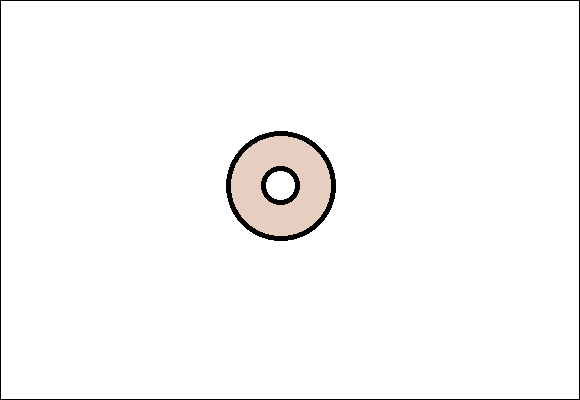
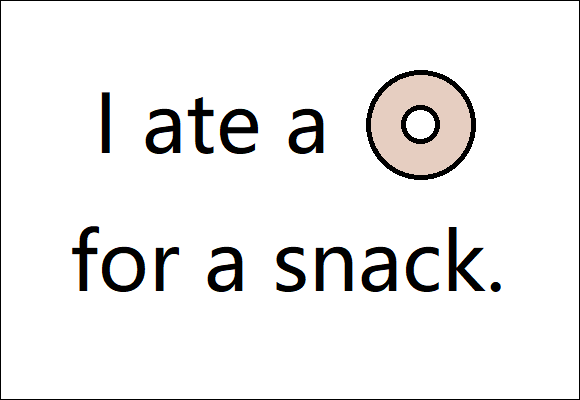
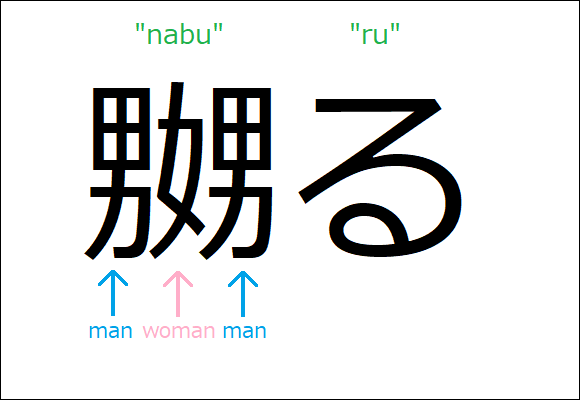
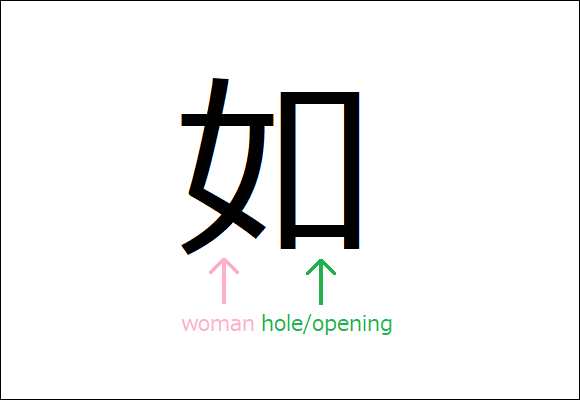
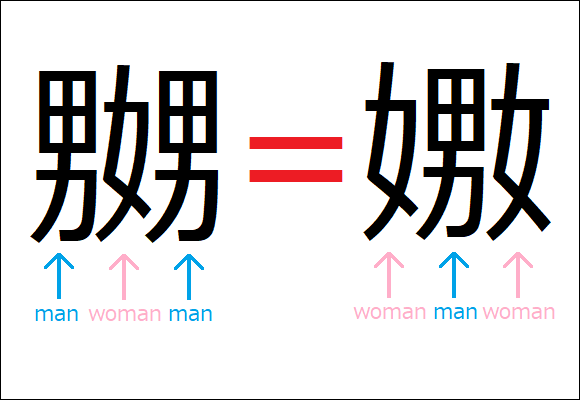
 Japanese study tip: Imagine kanji characters as fighting game characters, like in this cool video
Japanese study tip: Imagine kanji characters as fighting game characters, like in this cool video Poop Kanji-Drill toilet paper is the best way to accomplish your Japanese studying doo-ties
Poop Kanji-Drill toilet paper is the best way to accomplish your Japanese studying doo-ties Philosophy with numbers: The math problem that stumped the Japanese internet
Philosophy with numbers: The math problem that stumped the Japanese internet Draft bill proposal seeks to curtail unconventional “kirakira” kanji name readings in Japan
Draft bill proposal seeks to curtail unconventional “kirakira” kanji name readings in Japan Transforming kanji watches not so great for telling time, perfect for being awesome
Transforming kanji watches not so great for telling time, perfect for being awesome Bad tourist manners at Mt Fuji Lawson photo spot prompts Japanese town to block view with screens
Bad tourist manners at Mt Fuji Lawson photo spot prompts Japanese town to block view with screens Foreigner’s request for help in Tokyo makes us sad for the state of society
Foreigner’s request for help in Tokyo makes us sad for the state of society McDonald’s Japan’s new pancake pie is a taste sensation
McDonald’s Japan’s new pancake pie is a taste sensation FUK COFFEE?!? Japanese cafe has a perfectly innocent reason for its startling-looking name
FUK COFFEE?!? Japanese cafe has a perfectly innocent reason for its startling-looking name Studio Ghibli unveils massive T-shirt collection featuring top anime movie characters
Studio Ghibli unveils massive T-shirt collection featuring top anime movie characters One of Japan’s oldest castles now lets travelers spend night on the grounds, drink in its keep
One of Japan’s oldest castles now lets travelers spend night on the grounds, drink in its keep Two things to do, and two things not to do, when leaving a traditional Japanese inn
Two things to do, and two things not to do, when leaving a traditional Japanese inn Should you add tartar sauce to Japanese curry rice? CoCo Ichi makes diners an unusual offer
Should you add tartar sauce to Japanese curry rice? CoCo Ichi makes diners an unusual offer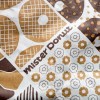 Mister Donut’s new Kyoto roasted green tea donut is a mess…in the best possible way
Mister Donut’s new Kyoto roasted green tea donut is a mess…in the best possible way Amazing exhibition of Japan’s legendary “cursed katana” is going on right now【Photos】
Amazing exhibition of Japan’s legendary “cursed katana” is going on right now【Photos】 Japanese ramen restaurants under pressure from new yen banknotes
Japanese ramen restaurants under pressure from new yen banknotes Red light district sushi restaurant in Tokyo shows us just how wrong we were about it
Red light district sushi restaurant in Tokyo shows us just how wrong we were about it McDonald’s new Happy Meals offer up cute and practical Sanrio lifestyle goods
McDonald’s new Happy Meals offer up cute and practical Sanrio lifestyle goods Tokyo Tsukiji fish market site to be redeveloped with 50,000-seat stadium, hotel, shopping center
Tokyo Tsukiji fish market site to be redeveloped with 50,000-seat stadium, hotel, shopping center Japanese city loses residents’ personal data, which was on paper being transported on a windy day
Japanese city loses residents’ personal data, which was on paper being transported on a windy day Beautiful Red and Blue Star luxury trains set to be Japan’s new Hokkaido travel stars
Beautiful Red and Blue Star luxury trains set to be Japan’s new Hokkaido travel stars Ghibli Park now selling “Grilled Frogs” from food cart in Valley of Witches
Ghibli Park now selling “Grilled Frogs” from food cart in Valley of Witches New definition of “Japanese whiskey” goes into effect to prevent fakes from fooling overseas buyers
New definition of “Japanese whiskey” goes into effect to prevent fakes from fooling overseas buyers Our Japanese reporter visits Costco in the U.S., finds super American and very Japanese things
Our Japanese reporter visits Costco in the U.S., finds super American and very Japanese things All-you-can-drink Starbucks and amazing views part of Tokyo’s new 170 meter-high sky lounge
All-you-can-drink Starbucks and amazing views part of Tokyo’s new 170 meter-high sky lounge More foreign tourists than ever before in history visited Japan last month
More foreign tourists than ever before in history visited Japan last month New Pokémon cakes let you eat your way through Pikachu and all the Eevee evolutions
New Pokémon cakes let you eat your way through Pikachu and all the Eevee evolutions Disney princesses get official manga makeovers for Manga Princess Cafe opening in Tokyo
Disney princesses get official manga makeovers for Manga Princess Cafe opening in Tokyo We try out “Chan Ramen”, an underground type of ramen popular in the ramen community
We try out “Chan Ramen”, an underground type of ramen popular in the ramen community Sales of Japan’s most convenient train ticket/shopping payment cards suspended indefinitely
Sales of Japan’s most convenient train ticket/shopping payment cards suspended indefinitely Sold-out Studio Ghibli desktop humidifiers are back so Totoro can help you through the dry season
Sold-out Studio Ghibli desktop humidifiers are back so Totoro can help you through the dry season Japanese government to make first change to romanization spelling rules since the 1950s
Japanese government to make first change to romanization spelling rules since the 1950s Ghibli founders Toshio Suzuki and Hayao Miyazaki contribute to Japanese whisky Totoro label design
Ghibli founders Toshio Suzuki and Hayao Miyazaki contribute to Japanese whisky Totoro label design Doraemon found buried at sea as scene from 1993 anime becomes real life【Photos】
Doraemon found buried at sea as scene from 1993 anime becomes real life【Photos】 Tokyo’s most famous Starbucks is closed
Tokyo’s most famous Starbucks is closed One Piece characters’ nationalities revealed, but fans have mixed opinions
One Piece characters’ nationalities revealed, but fans have mixed opinions We asked a Uniqlo employee what four things we should buy and their suggestions didn’t disappoint
We asked a Uniqlo employee what four things we should buy and their suggestions didn’t disappoint W.T.F. Japan: Top 5 most difficult kanji ever【Weird Top Five】
W.T.F. Japan: Top 5 most difficult kanji ever【Weird Top Five】 Letter from first-grade daughter to her father is too cute and too deep for Japanese Internet
Letter from first-grade daughter to her father is too cute and too deep for Japanese Internet Kanji fail — Japanese parents shocked to learn their baby girl’s name has inappropriate meaning
Kanji fail — Japanese parents shocked to learn their baby girl’s name has inappropriate meaning Renowned Japanese calligraphy teacher ranks the top 10 kanji that foreigners like
Renowned Japanese calligraphy teacher ranks the top 10 kanji that foreigners like Kanji Tetris is the coolest way to practice and play with Japanese that we’ve ever seen【Video】
Kanji Tetris is the coolest way to practice and play with Japanese that we’ve ever seen【Video】 Tired of wasting paper practicing your kanji? Try these reusable water-activated practice sheets
Tired of wasting paper practicing your kanji? Try these reusable water-activated practice sheets Four new era names the Japanese government rejected before deciding on Reiwa
Four new era names the Japanese government rejected before deciding on Reiwa The hidden meaning of the U.S. Air Force’s “shake and fries” patch in Japan
The hidden meaning of the U.S. Air Force’s “shake and fries” patch in Japan Hackers to Gundam: 5 rumors about failed North Korean missile launch surface on Japanese Internet
Hackers to Gundam: 5 rumors about failed North Korean missile launch surface on Japanese Internet What’s funnier and more likely to make you study than poo? How about male pattern baldness?
What’s funnier and more likely to make you study than poo? How about male pattern baldness? Japan’s top baby names for 2015: Will Naruto-influenced monikers still reign supreme?
Japan’s top baby names for 2015: Will Naruto-influenced monikers still reign supreme? Japanese teacher’s explanation about “individuality” to kids has a deep, beautiful meaning
Japanese teacher’s explanation about “individuality” to kids has a deep, beautiful meaning Video of each Japanese hiragana getting “measured up” is oddly cute and satisfying【Video】
Video of each Japanese hiragana getting “measured up” is oddly cute and satisfying【Video】 Twitter users say Japanese Prime Minister’s name is hiding in the kanji for Japan’s new era name
Twitter users say Japanese Prime Minister’s name is hiding in the kanji for Japan’s new era name Japanese woman celebrates 100th birthday, boggles netizens’ minds with unusual name
Japanese woman celebrates 100th birthday, boggles netizens’ minds with unusual name Kanji fail – Japanese World Cup fans notice Greek player’s strange tattoo
Kanji fail – Japanese World Cup fans notice Greek player’s strange tattoo
Leave a Reply